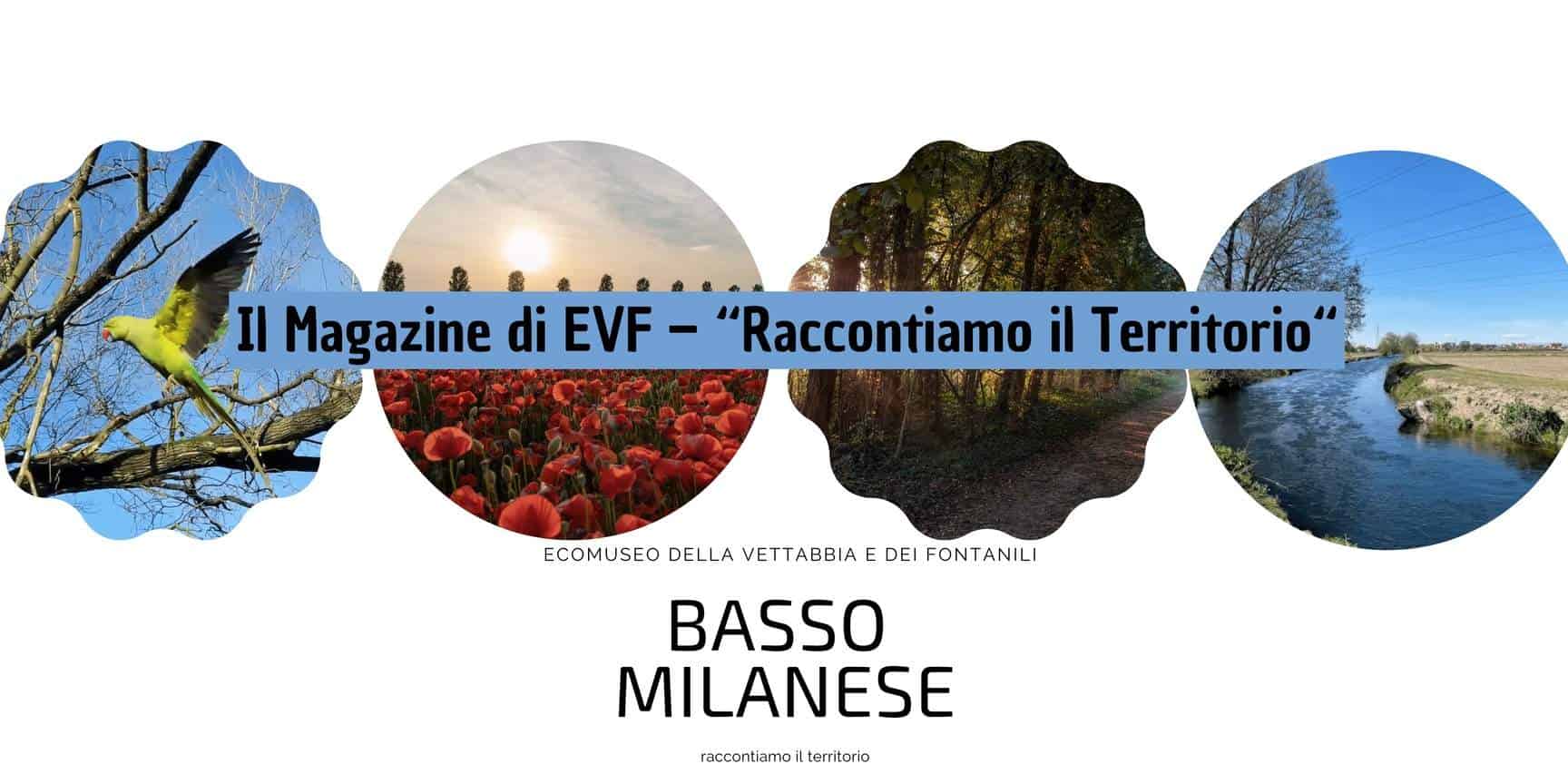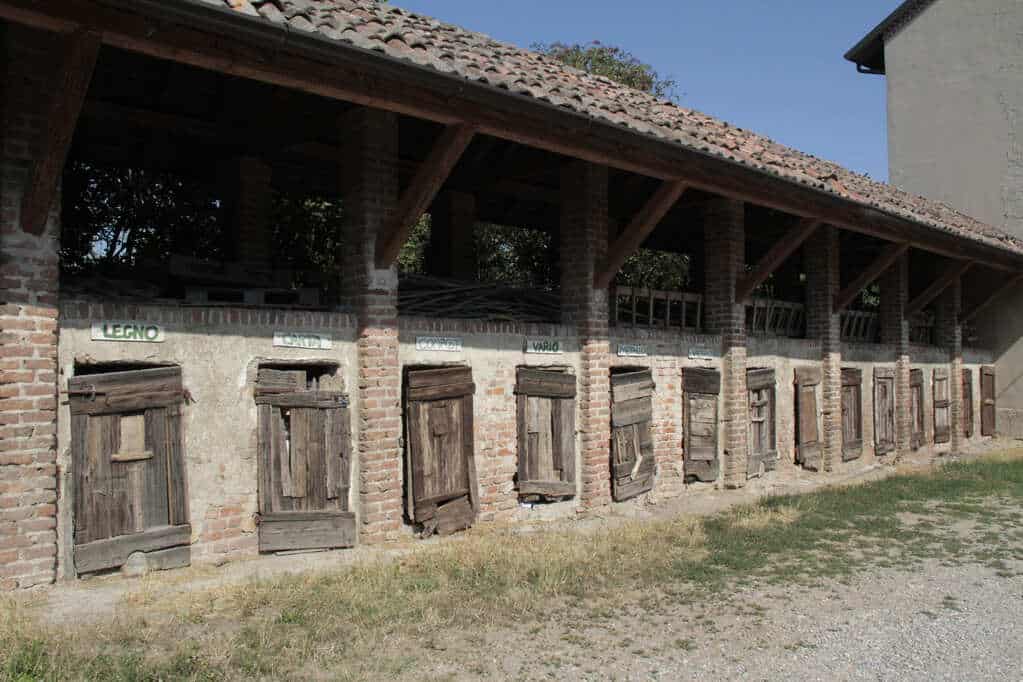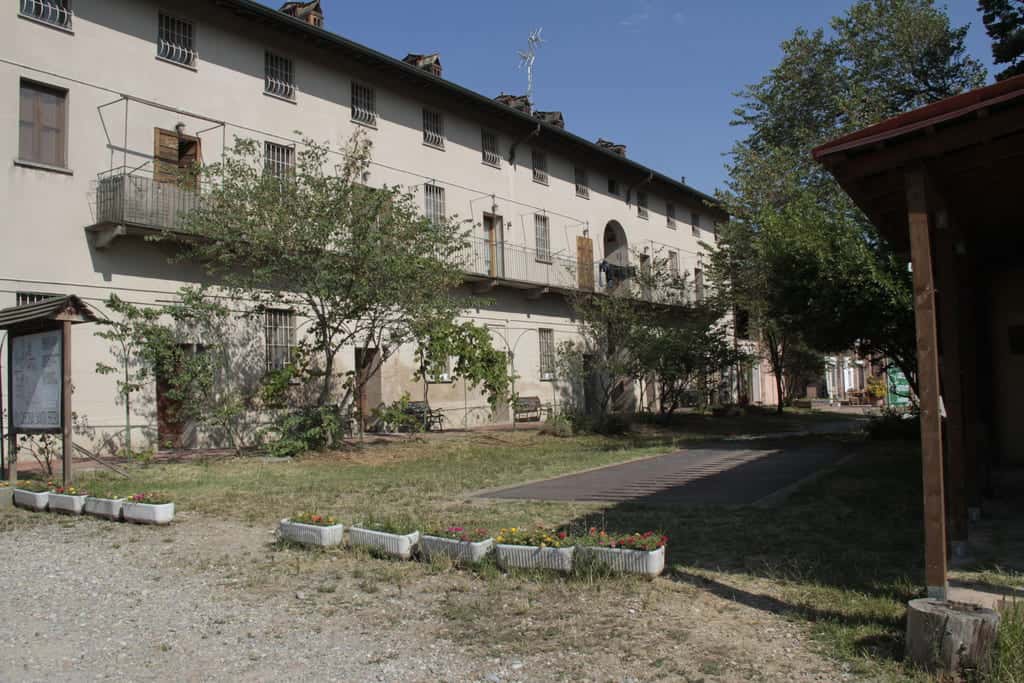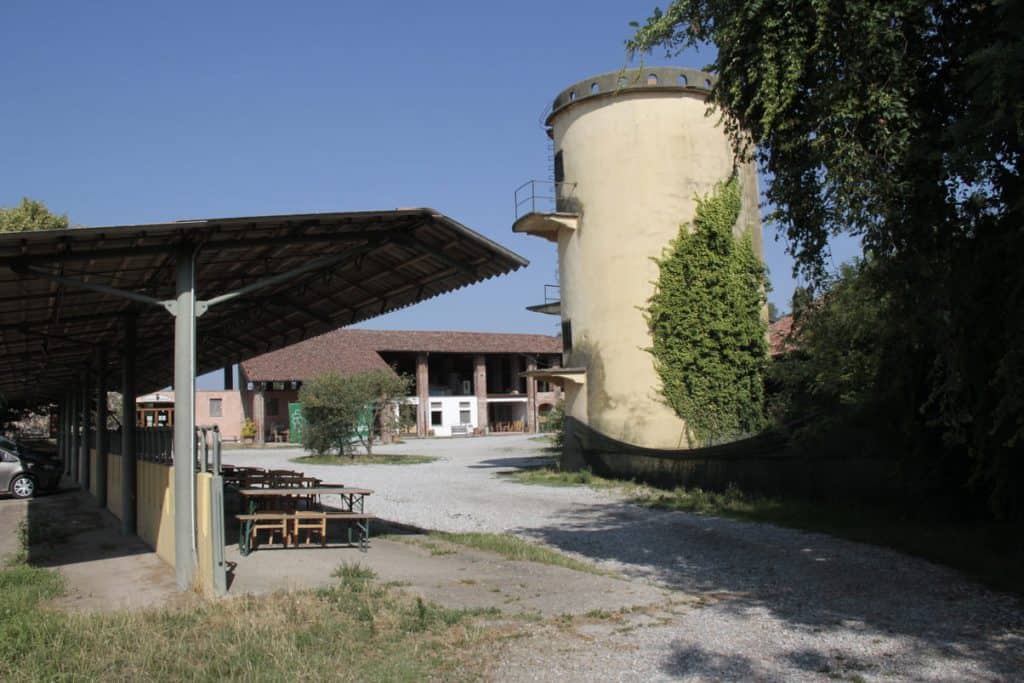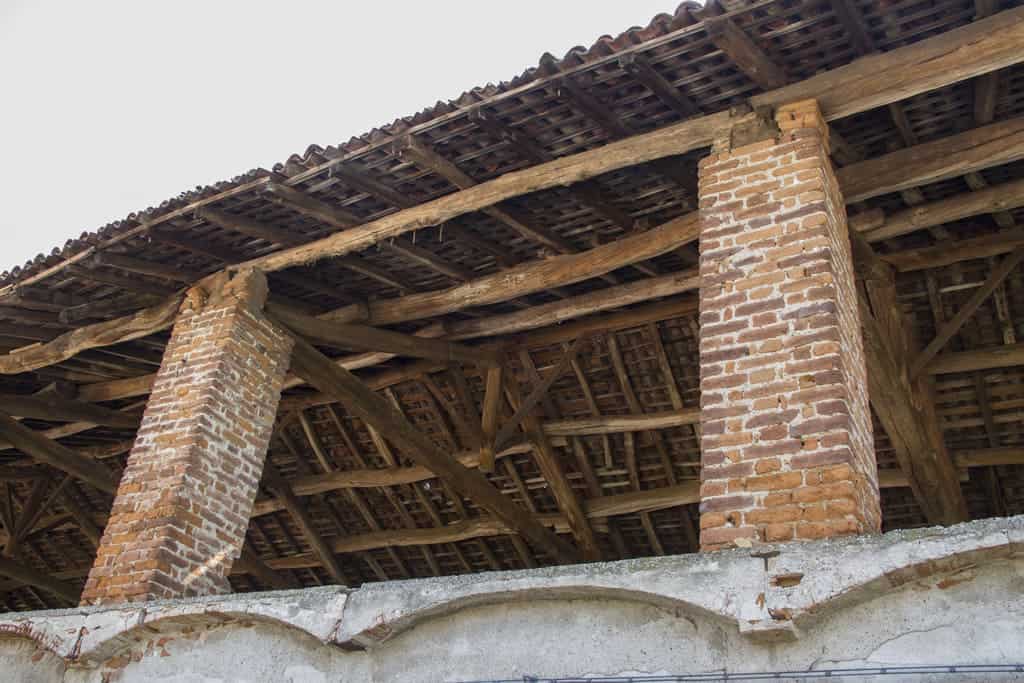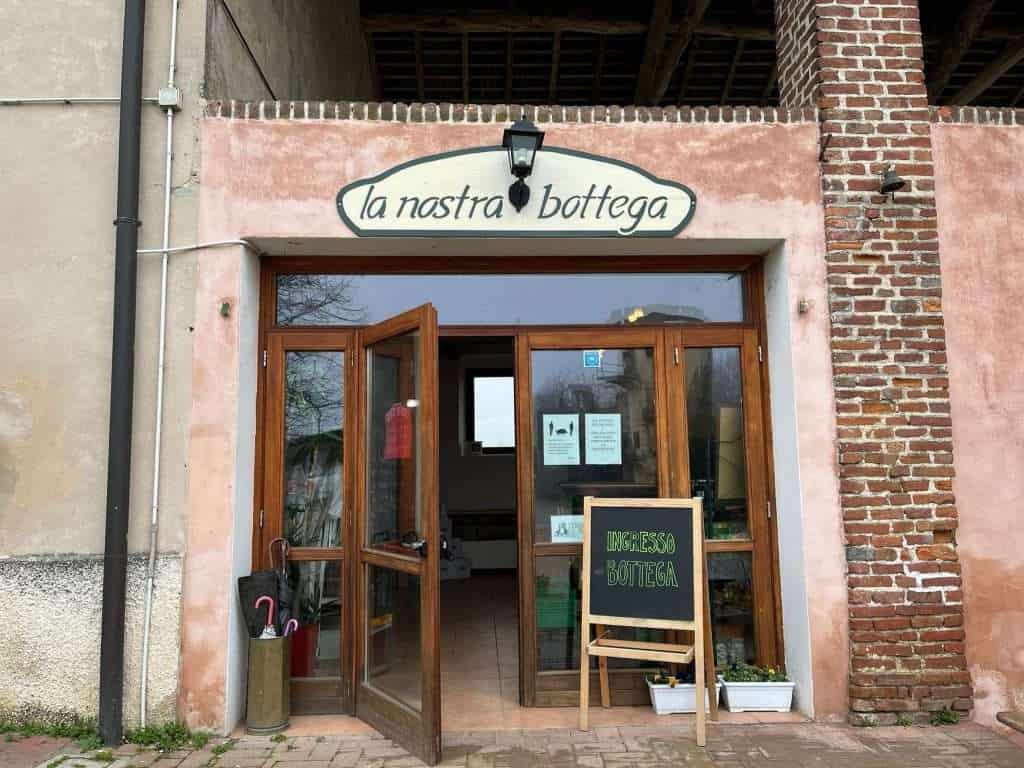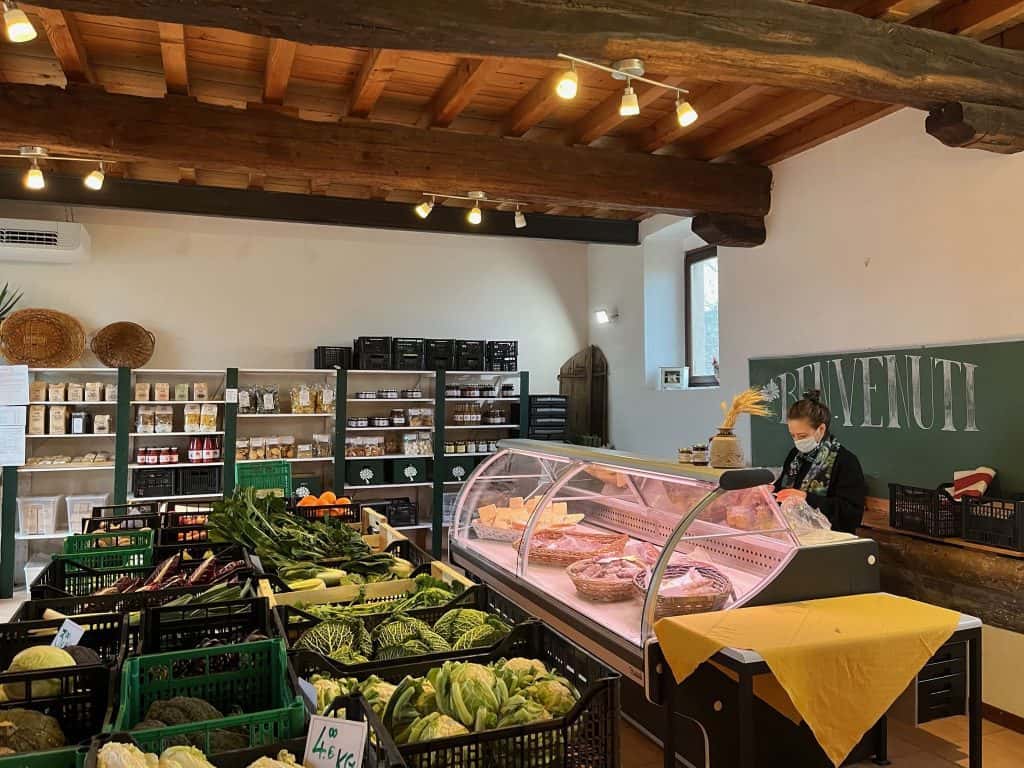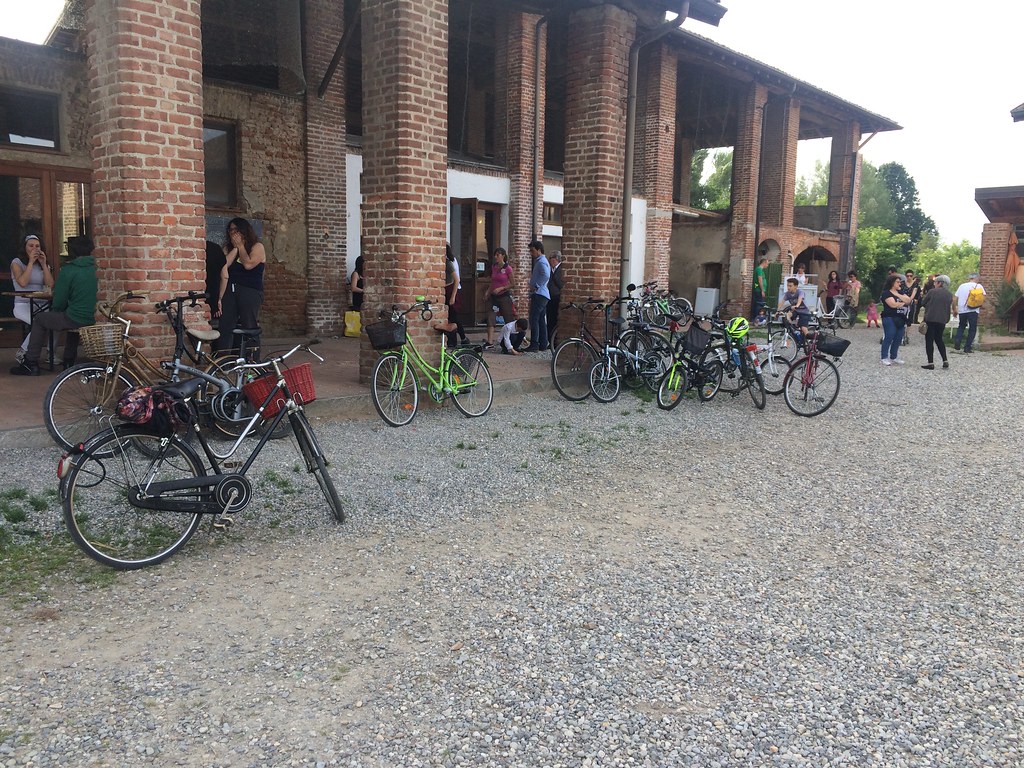Cascina Santa Brera
History
The first document naming this farm goes back to 1299, but it was probably stil 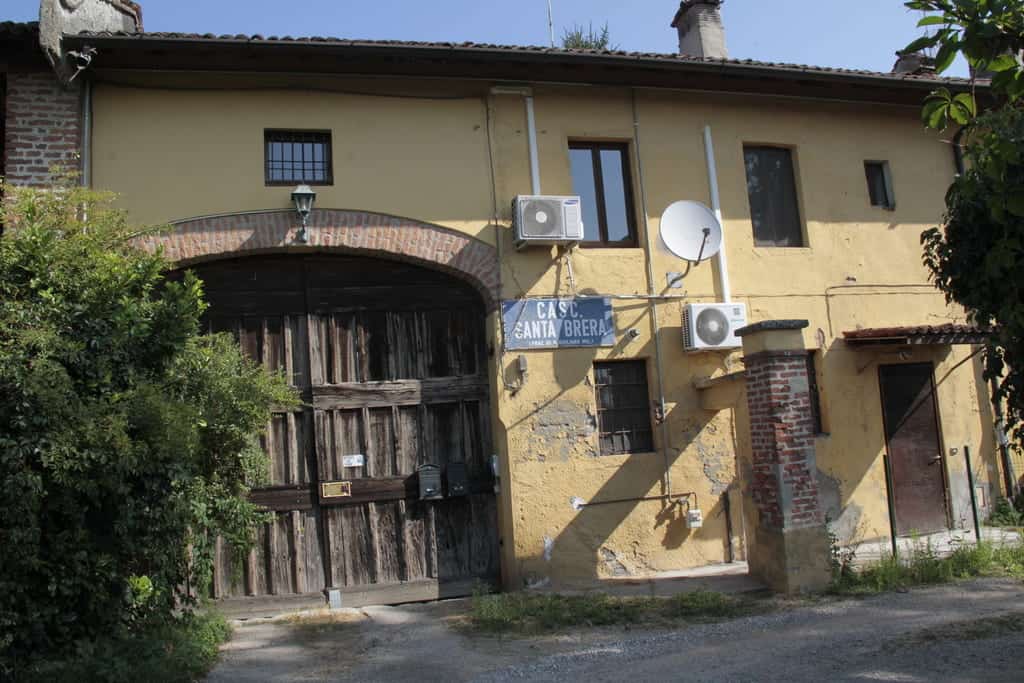 l existing since the 9th century, when the cult of Santa Brigida spread throughout Italy.
l existing since the 9th century, when the cult of Santa Brigida spread throughout Italy.
Brigida was an Irish saint, patron of Kildare Isle, where a great monastery had been built in her honour, of which she was abbess, and then had been suppressed at the times of Henry VIII and of the Anglican Schism.
When the saint died, her head was transferred to Lisbon, and the rest of her relics were entombed in Alsace.
The cult of Santa Brigida therefore spread throughout Europe and Italy, with a particular diffusion in the countryside. To Santa Brigida was dedicated, as a matter of fact, the small church of Cascina Santa Brera, located outside the agricultural sites, surrounded by the minor and major court, which acquired that name by extension.
The farm is located near the river Lambro, in the territory of San Giuliano Milanese, south to the town, towards Melegnano. It was an autonomous municipality until 1841 and it is situated 10 Km from Milan.
The small rural location of Santa Brera, of ancient origins, formed a municipality included in the Pieve of San Giuliano, part of the Duchy of Milan, and was bordered by Zivido to the north, Colturano to the east, Melegnano and Pedriano to the south, and Viboldone to the west. The location registered only 80 residents by the census of 1751. In Napoleon times, in 1805, the population had risen to 182 units, including the nearby Rocca Brivio. In 1809 the municipality of Santa Brera was suppressed and aggregated to the neighbouring municipality of Pedriano, aggregated in its turn to Melegnano two years after: all these centres regained their autonomy in 1816, after the foundation of the Lombard-Venetian Kingdom.
The Austrians themselves, however, in 1841 had to recognize the rationality of the work of Napoleon and so the municipality of Santa Brera was definitely suppressed and once again attached to Pedriano, following its fate over time.
Cascina Santa Brera is an example of a secular agricultural structure of the fortified type, by way of its position near the Rocca. Keeping in mind all that it was already written about the above-mentioned plant, there is no doubt that having the strategic control of the bifurcation of the two river valleys, meant having the control of the whole territory. As a matter of fact, when the powerful Brivio family, towards the end of the 13th century, bought from the Torrianis the territories between San Giuliano Milanese and Melegnano, bothered to build a small castle in Zivido, south to the Rocca.
Particularly this one control both the confluence of Vettabbia and Lambro, and the SS9 via Emilia, and the northern side of Melegnano.
Cascina Santa Brera is located ab. 850 mt from Rocca Brivio, which is also on the edge of the terrace, near the Lambro Valley. Still today, you can see a tower on the southern part, towards Melegnano; the main entrance is also on this side. The estate takes its name from the small church of Santa Brigida, located on the edge as well, where there is a road leading to the fields, dividing the two farms which properly constitute the rural site. The religious building, surrounded by a terracotta wall with a small wrought iron gate at the entrance, until recent times had an inscription, painted on the portal saying “D.OM et Sanctae Brigidae, which now is no more visible, due to the complete abandonment of the chapel.
The main entrance (of the small Santa Brera) leads to a rustic court. On the right, there is the manor house, which is now being partially renovated, with a certain dignity. The manor court is slightly raised compared to the farmyard: a severe house, northwards, is characterized by a quite protruding gutter and by well-proportioned windows, with an elegant sill. An unexpected dynamism appears observing the face of the manor entrance, as the buildings are scaled and rotated one another and they end against the retaining wall of the main building. Interesting and functional is also the fireplace, located above the portal.
Exiting the northern gate, then, you can find the other court (major Santa Brera), unique in its genre in this area. The plant of the second court is triangular, with the entrance at the vertex. The side towards Lambro is particularly interesting, because it has a house with a big dormer and an external stair in stone: a type, which is uncommon in this area.
The tenant’s house has a south-oriented porch, whereas on the other side there is a fireplace well signed outside, with a wide opening below, leading to a cellar: also this building is quite old and run down.
It is clear, that the agricultural site had, at the times of its full functionality, a zootechnical orientation. The farm has, on the north-western side, some old stables, now in disuse from years: these were made with terracotta, with vaulted ceilings, supported by columns. Above the stable, there is the hayloft, connected to the former through an opening for the passage of the hay into the manger: sideways, the court occupied by the manure, the stables for the cows and the pigsty with further rustic accessories.
A general view shows the traces of a consistent structural rearrangement, made approximately at the end of the 16th century, with some interventions also throughout the 18th Century, but the plant, as we know, is older.
Moreover, the building was the headquarter of Francis I of Valois-Angouleme 81494-1547) (son of Louise of Savoy) and then battlefield in 1515 (Battle of Marignano, so-called Battle of the Giants). The farm, due to its dimensions, was taken by force by the Gascons, who were the avant-gardes of Francis I. These entered the building through the fields, passed the river, then the Vettabbia, and reached the Rocca, going on, until they arrived to Cascina Santa Brigida (now Cascina Santa Brera). Once there, the avant-gardes started looting and most of all emptying the cellars, which were full of foodstuff. Cascina Santa Brera, after an accurate examination of some delegates of the king, was then occupied by the French, who installed here their logistics plants.
Cascina Santa Brera … today
Nowadays Cascina Santa Brera is a farmhouse, located at the heart of Parco Agricolo Sud Milano. By this farm, you can have lunch/dinner, and stay overnight in the 40 available recently-renovated rooms. There are cultivations of fruits and vegetables, wheat for bread making, trees and bushes. They breed bees, donkeys, Varzese cows (Slow Food item), laying hens, pigs, chickens.
During the weekend, it is possible to buy directly cured meat, preserves, and fresh fruits and vegetables.
Ab. 10 Km from Milan, at the heart of Parco Agricolo Sud Milano, Cascina Santa Brera is a reality born to offer a unique experience about biological agriculture. Differently from the classical farms, the experience offered by Santa Brera is a unique experience. You can have lunch/dinner with raw materials which are rigorously biological, produced on site, or decide to buy during the weekends directly cured meat, preserves, fresh fruits and vegetables, or simply spend your weekend in one of the 40 available and recently-renovated rooms.
Cascina Santa Brera project is inspired by the ethical principles of permaculture:
- To assume the responsibility of one’s own life
- Take care of the soil
- Take care of people
- A fair sharing of resources
These principles are carried forward:
- by practising biological agriculture
- by maximizing biodiversity
- by giving free access to the visitors for a walk
- by respecting the wild animal’s needs, even beyond the biological disciplinary
- by allowing those who participate in the project “adopt an vegetable garden” to gather personally their own products
- by organizing guided tours and follow-up meetings open to all
- by teaching, to those who are interested in undertaking an agricultural activity, the techniques and principles useful to achieve the results
- by hosting volunteers and students from all over the world for an exchange of experiences and cultures, thus increasing the work places
- by producing healthy food for the residents, for the subscribers and for all the customers.
- By educating the children and their families to environmental and social awareness.
Harmony Between Nature and History: A Journey Along the Lambro River and Cascina Santa Brera in 1985

The photograph by Andrea Bazzoni, captured in 1985 and now part of the historical archive of the Ecomuseo della Vettabbia e dei Fontanili, transports us to a timeless landscape along the Lambro River. The scene unfolds like a natural painting, with a vast green expanse stretching to the horizon, offering a serene spectacle.
The Lambro flows to the right, framed by towering trees lining its banks. Its majesty is heightened by the reflection of the blue sky on its waters. To the left, a solitary bicycle rests on the grass, a silent witness to the adventures undertaken along the river’s course.
The bicycle stands near a small pond, where the tranquil surface mirrors the sunlight, creating captivating light patterns. It is a place of calm, an oasis of peace where visitors can immerse themselves in the landscape’s beauty and appreciate the tranquility that only such places can offer.
The trees along the Lambro’s banks form a natural frame, their branches reaching towards the river, offering shade and refuge. In the distance, the distinctive silhouette of Cascina Santa Brera emerges, a central feature of the area’s history and culture. The farmhouse, strong and steeped in history, stands as a living testament to a past that harmoniously merges with the surrounding nature.
Andrea Bazzoni’s evocative photograph represents not only a snapshot of a special moment but also a testament to the deep bond between humanity and nature in this place. The tranquility and serenity conveyed by the photo suggest that this corner of paradise is meant for those who choose to venture along the path leading from northern San Giuliano Milanese southward, passing through enchanting sites such as Cascina Santa Brera and ultimately reaching Rocca Brivio. It is a path that winds through history and the beauty of nature, inviting exploration on foot or by bicycle to fully savor the magic of this unique location.
Traduzione: Piera Scudeletti – EVF
